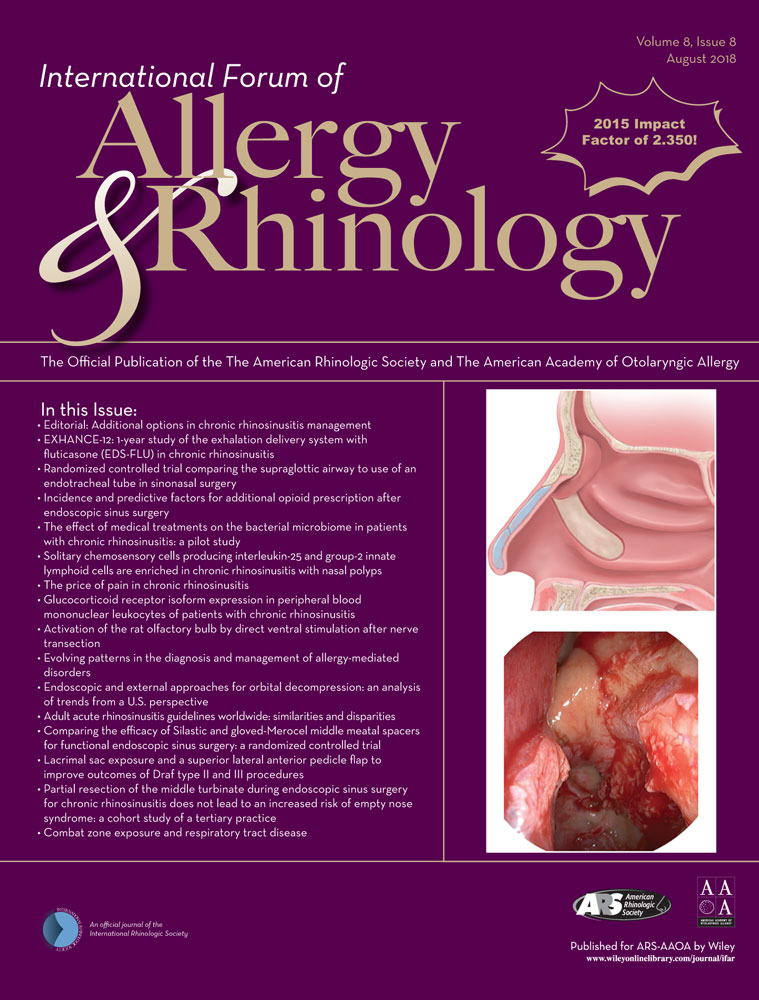Activation of the rat olfactory bulb by direct ventral stimulation after nerve transection
Funding source for the study: the Medarva Foundation.
Potential conflict of interest: None provided.
Presented at the American Rhinologic Society Spring Meeting at the COSM, April 21, 2018, in National Harbor, MD.
Abstract
Background
The aim of this study was to demonstrate how direct electrical stimulation can activate the olfactory bulb after denervation of the olfactory nerve input.
Methods
Sprague-Dawley rats (n = 5) were anesthetized and olfactory bulbs exposed. Olfactory nerves were transected by passing a Teflon blade between the cribriform plate and ventral surface of the bulb. A cochlear implant electrode array was used to stimulate 6 different positions along the ventral surface of the olfactory bulb. Biphasic constant-current pulses were used (50-1000 μA, 50–1000 μs) to stimulate the bulb, and a 16-electrode paddle array was used to record localized negative field potential responses at the dorsal surface of the bulb.
Results
Localized negative field potentials were reliably obtained using biphasic, 500-μA, 200-μs pulses. A shift in stimulating position by 1 mm resulted in a significant change in the dorsal field potential.
Conclusion
Direct stimulation of the deafferented olfactory bulb was effective in generating localized field potential responses. These findings support the potential use of direct electrical stimulation for the treatment of anosmia.




